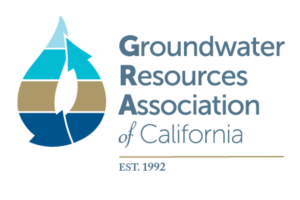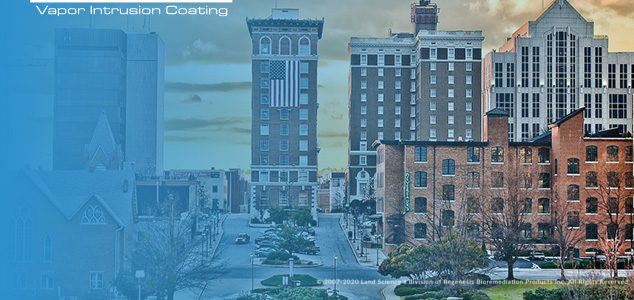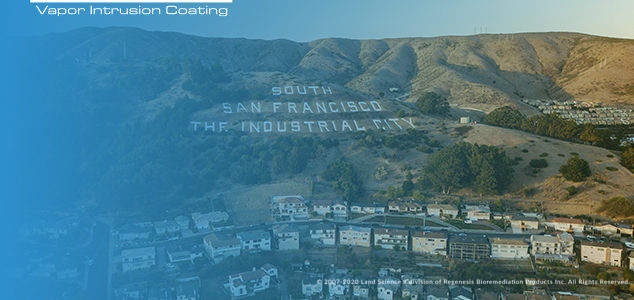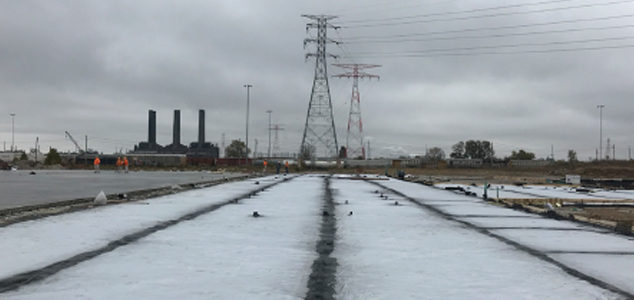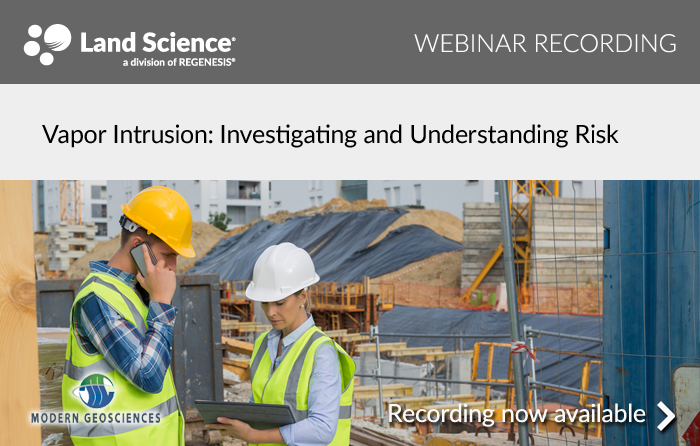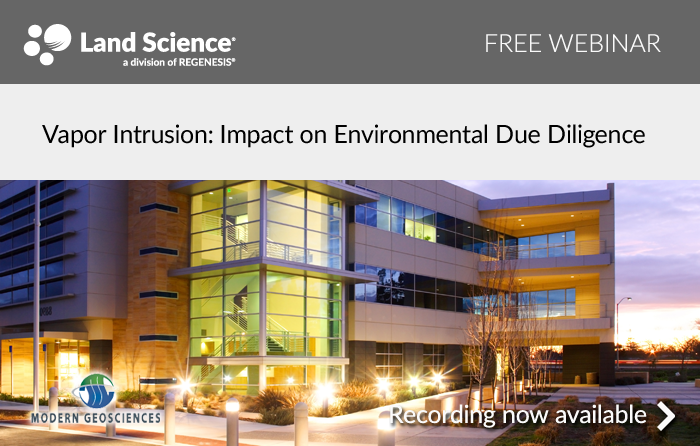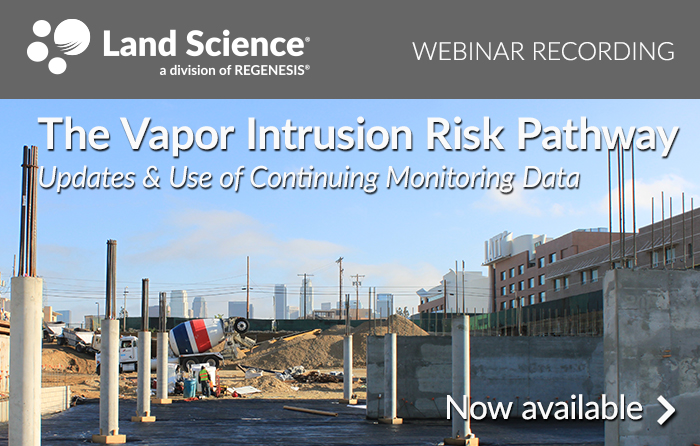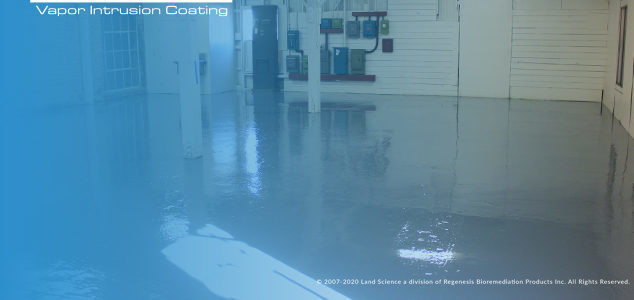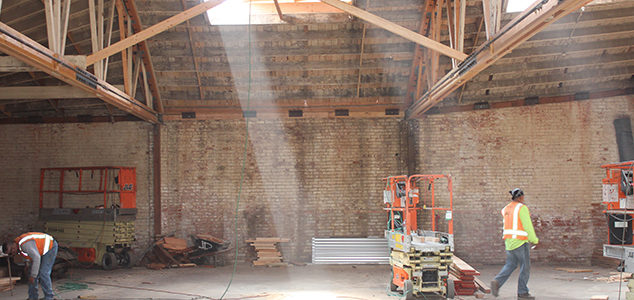August 2019 Land Science Newsletter
|
|
Questions?REGENESIS has remediation experts based worldwide to assist you in your brownfield site cleanup. As the technology leader in advanced bioremediation solutions, we can help ensure success on your next remediation project. Use the map on our website to find your regional REGENESIS contact today.
|
Retro-Coat Utilized to Prevent Harmful TCE and Chloroform Vapor Intrusion
A former industrial manufacturing facility in Greenville, SC was purchased for redevelopment in 2017. Building improvements were planned to include a warehouse, offices and self-storage units to serve a growing commercial area. Now located within an urban commercial land use area of Greenville, redevelopment plans included converting the industrial warehouse building into climate controlled self-storage units, and renovating the office into an apartment unit and office.
Prior to purchasing the site in 2017, the current site owners entered into a Voluntary Cleanup Contract and Brownfields agreement with the South Carolina Department of Health and Environmental Control (SCDHEC). The Brownfields agreement allowed the site owners to purchase the site while receiving SCDHEC liability protection for existing environmental contamination by agreeing to perform certain environmental assessment, mitigation, or remediation activities.
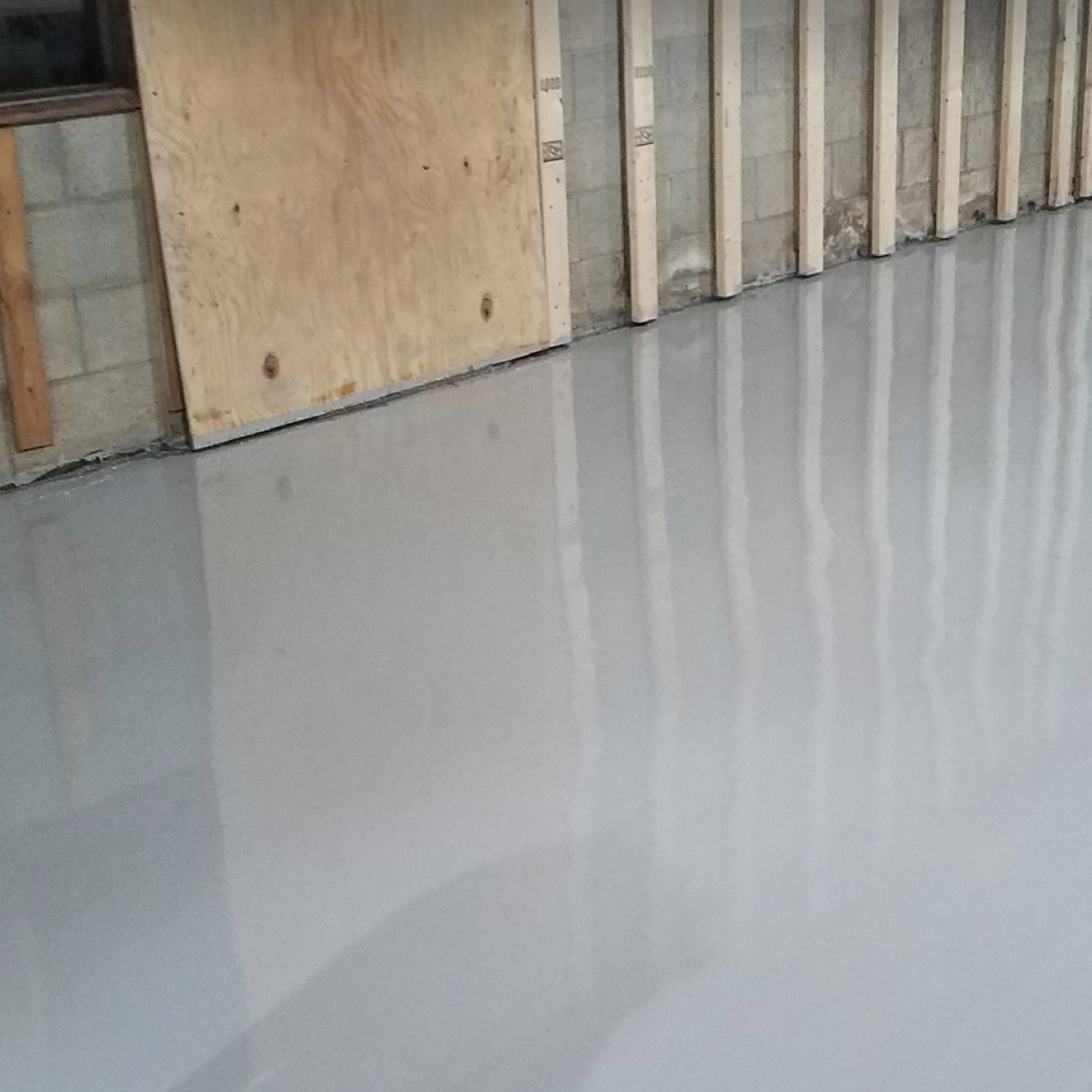
This case study features the following:
- The Retro-Coat barrier and Vapor-Vent system were incorporated into already planned renovations, saving the site owner time and money.
- Retro-Coat is resistant to both TCE and chloroform and is a wearing surface, rated for foot and forklift traffic.
- The Retro-Coat system layers cure quickly, reducing building downtime.
- The combination of Retro-Coat and Vapor-Vent was chosen as a remedial solution to mitigate the risk of harmful vapor intrusion.
Retro-Coat Helps Speed Real Estate Transaction
 Project Highlights
Project Highlights
- Retro-Coat functioned as a vapor intrusion mitigation membrane as well as a long-lasting coating for the basement level, accomplishing two of the owner’s goals with one product.
- Retro-Coat was chosen as the most feasible and effective treatment due to compatibility with pre-existing methane mitigation system components.
- Retro-Coat is resistant to harmful methane gas intrusion and is a wearing surface, meaning no additional concrete protection is necessary.
- The updated vapor intrusion mitigation system allowed for the new tenants to move in quickly.
- Retro-Coat is applied without any odor and cures quickly, reducing building downtime.
Project Summary
An office building located on the San Francisco Peninsula was left vacant for multiple years. The building is located on top of a capped landfill which is a known methane producer. After a recent change in ownership, it was important for the new owner to make the necessary improvements to the building so that new tenants could move in quickly. One of these improvements was to update the vapor mitigation system to ensure the tenant’s safety from any harmful vapor intrusion.
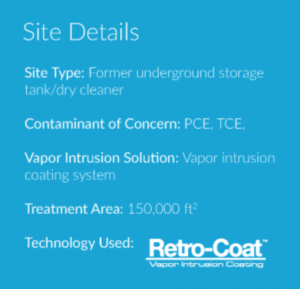 The owner enlisted the expertise of Langan to update the vapor mitigation system. Langan proposed using Retro-Coat Vapor Intrusion Coating System because of its proven resistance to harmful vapors and its durability. The owner was thoroughly pleased with this application because it accomplished two goals with a single product: it mitigated the harmful vapor intrusion and provided a durable coating for the floor of the basement level. Retro-Coat’s multi-functionality saved the site owner time and money.
The owner enlisted the expertise of Langan to update the vapor mitigation system. Langan proposed using Retro-Coat Vapor Intrusion Coating System because of its proven resistance to harmful vapors and its durability. The owner was thoroughly pleased with this application because it accomplished two goals with a single product: it mitigated the harmful vapor intrusion and provided a durable coating for the floor of the basement level. Retro-Coat’s multi-functionality saved the site owner time and money.
Technology Description
Retro-Coat Vapor Intrusion Coating consists of chemically resistant materials which protect existing structures from the threat of contaminant vapor intrusion. Retro-Coat was developed by experienced vapor intrusion specialists and is proven to resist the most aggressive chemical vapors. This technology acts as a protective barrier eliminating the need to remove the existing slab and when combined with in situ treatment, it can greatly lower remediation costs.
RESULTS
Retro-Coat consists of chemically resistant materials which will protect this structure from the threat of contaminant vapor intrusion, specifically methane gas. Retro-Coat finishes to a high gloss, easy-to-clean surface that is impervious to vapor and moisture transmission. Additionally, Retro-Coat withstands foot traffic and industrial settings. It was significant to have a highly durable coating system in place because the tenants plan to use the basement level to house large computers and heavy technological equipment.
The site owner has been very pleased with the outcomes from Retro-Coat. The building’s basement level has a highly durable coating and most importantly, the vapor intrusion mitigation system is now highly effective.
Former St. Louis Chemical Plant Incorporates Geo-Seal and Vapor-Vent for Redevelopment Project
Project Highlights
- Land Science Contaminant Vapor Barrier System applied to over 70,000 square feet of commercial space
- Redevelopment project is projected to create more than 1,000 new jobs in the St. Louis area
Project Summary
A former Solutia chemical plant, located in St. Louis, Missouri, in between the Mississippi River and St. Louis, required environmental remediation for safe redevelopment. The developers plan to turn the brownfield site into industrial and warehouse space. The redevelopment project is projected to significantly impact the area by providing more than 1,000 jobs.
The environmental remediation process included removing contaminated soil and treating contaminated water, as well as protecting buildings from possible vapor intrusion. In order to prevent vapor intrusion, the contractors installed over 70,000 square feet of Land Science Contaminant Vapor Barrier System with a vapor ventilation system. Land Science Contaminant Vapor Barrier System and Vapor-Vent were installed in between the soil pad and the foundation of the new buildings. Installing Land Science Contaminant Vapor Barrier System, a composite and chemically resistant membrane system, effectively seals all entry pathways into the building preventing harmful vapor intrusion. In conjunction with Land Science Contaminant Vapor Barrier System, Vapor-Vent, a ventilation system, allows for the natural buildup of underground vapors to be safely diverted and diffused above ground. The vapor barrier system ensures safety from vapor intrusion for this brownfield redevelopment.
Download the complete case study
© 2021 All rights reserved. Geo-Seal is a registered trademark of Epro Services Inc.
Vapor Intrusion: Investigating and Understanding Risk
Speakers: Kenneth S. Tramm, PhD, PG, CHMM Principal, Modern Geosciences and Thomas Szocinski, CEP Director of Vapor Intrusion, Land Science
Land Science is pleased to present a webinar with Dr. Kenneth S. Tramm, a founding Principal with Texas-based engineering firm, Modern Geosciences. Dr. Tramm specializes in air quality monitoring, environmental due diligence, risk-based closures, and remediation design. During this free webinar, Dr. Tramm provides us with an overview on investigating vapor intrusion and understanding risk.
Joining Dr. Tramm is Thomas Szocinski, Director of Vapor Intrusion at Land Science, who shares successful vapor mitigation case studies.
Webinar Recording Now Available
Complete the form below to view the webinar recording.
Vapor Intrusion: Impact on Environmental Due Diligence
Speakers: Kenneth S. Tramm, PhD, PG, CHMM Principal, Modern Geosciences and Thomas Szocinski, CEP Director of Vapor Intrusion, Land Science
Land Science is pleased to present a webinar with Dr. Kenneth S. Tramm, a founding Principal with Texas-based engineering firm, Modern Geosciences. Dr. Tramm specializes in air quality monitoring, environmental due diligence, risk-based closures, and remediation design. In this free webinar Dr. Tramm’s presentation provides an update on how Vapor Intrusion is impacting the Environmental Due Diligence industry.
Thomas Szocinski, Director of Vapor Intrusion at Land Science, joins Dr. Tramm to review vapor intrusion mitigation solutions currently available, including Geo-Seal® Vapor Intrusion Barrier and Retro-Coat™ Vapor Intrusion Coating.
Webinar Recording Now Available
Complete the form below to view the webinar recording.
Vapor Intrusion Webinar with Blayne Hartman: Regulatory Updates and Practical Assessment Strategies
Dr. Blayne Hartman of Hartman Environmental and Dr. Mark Kram of Groundswell Technologies. During this webinar presentation, Dr.s Hartman and Kram discuss updates regarding vapor intrusion pathway issues, as well as the use of continuous monitoring data. Vapor intrusion continues to be a hot topic among environmental practitioners and represents an opportunity in the industry for firms to expand in providing informed and proper VI guidance and best practices for their clients’ sites.
Vapor Intrusion Webinar with Blayne Hartman: Regulatory Updates and Practical Assessment Strategies
Speakers: Dr. Blayne Hartman, founder of Hartman Environmental Geoscience and Thomas Szocinski, CEP, Director of Vapor Intrusion at Land Science
In this webinar we were pleased to have Dr. Blayne Hartman, nationally recognized vapor intrusion expert and founder of Hartman Environmental Geoscience. Dr. Hartman’s orgranization provides Vapor Intrusion, Soil Gas & Analytical Expertise and specializes in VI & Soil Gas Training, Real-Time Continuous Monitoring of TCE & other VOCs in Indoor Air, and vapor intrusion regulatory guidance. His presentation focused on vapor intrusion regulatory updates.
We also had with us Thomas Szocinski, CEP, Director of Vapor Intrusion at Land Science. Mr. Szocinksi shared information about vapor intrusion mitigation technologies for new buildings and existing structures.
Webinar Recording Now Available
Complete the form below to view the webinar recording.
Historic Building Achieves Site Closure Using Retro‐Coat to Meet Environmental Screening Levels
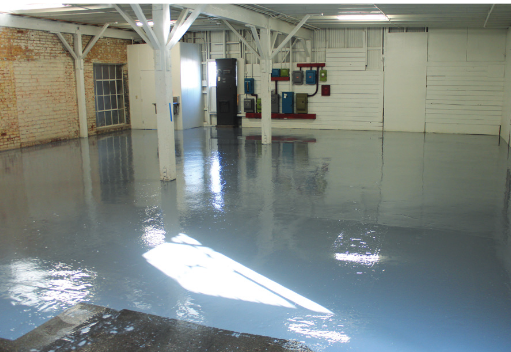 Project Highlights
Project Highlights
- Site achieves closure due to the successful Retro‐Coat™ application
- Post‐application indoor air data confirmed Retro‐Coat compliance with residential and commercial ESLs
- Customized finish met building owner requirements
- The application of Retro‐Coat achieved orders of magnitude reduction similar to those of Sub‐Slab Depressurization (SSD) Systems without the need to operate and maintain finicky mechanical systems
Project Summary
Retro‐Coat was selected to mitigate vapor intrusion within a structure built in 1907 that had been impacted by both a former underground storage tank and a local dry cleaner. Indoor air samples taken prior to application showed chlorinated solvent‐based PCE and TCE levels above the Regional Water Quality Control Board Environmental Screening Levels (RWQCB ESL).
Existing wood flooring, CMU block walls, framing obstructions on the wall, and conduits penetrating both the basement floor and walls presented challenges to successfully providing vapor intrusion mitigation to the entire basement area. The age of the structure was also a factor because little was known about how the building was constructed or what expansions or improvements
 had been made over the years. The building owner sought to provide the future occupants of the building with vapor intrusion protection using a durable and slip resistant coating. Retro‐Coat was applied to the existing wall surface (CMU block walls) and across the floor. Additionally, a silica sand was broadcast across the floor during the Retro‐Coat application to achieve a non‐slip surface.
had been made over the years. The building owner sought to provide the future occupants of the building with vapor intrusion protection using a durable and slip resistant coating. Retro‐Coat was applied to the existing wall surface (CMU block walls) and across the floor. Additionally, a silica sand was broadcast across the floor during the Retro‐Coat application to achieve a non‐slip surface.
Upon completion of the Retro‐Coat application, indoor air samples were collected. Because the building use was mixed use, indoor air concentrations needed to meet both residential and commercial screening levels. The application of Retro‐Coat achieved orders of magnitude reduction similar to those of Sub‐Slab Depressurization (SSD) Systems without the need to operate and maintain unreliable mechanical systems.
Technology Description
Retro‐Coat Vapor Intrusion Coating System is a complete product line that consists of chemically resistant materials to protect existing structures from the threat of contaminant vapor intrusion without the need for additional concrete protection. The Retro‐Coat system has been subjected to rigorous testing procedures to prove its ability to combat the most aggressive chemical vapors. The system is rated for industrial use providing a durable finished surface suitable for vehicular traffic. Retro‐Coat coating technology was specifically developed for vapor intrusion.
Combined Technologies Treat High Vapor and TCE Levels at Former Michigan Manufacturing Facility
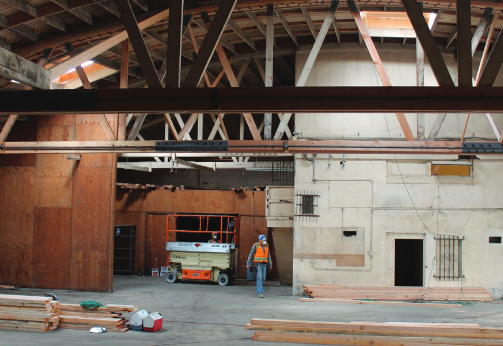 Project highlights
Project highlights
- Redeveloped facility delivers jobs to Michigan community
- Simultaneous use of Retro-Coat™ and Vapor-Vent™ reduced number of SSD points
- Approximately 30,000 square feet of Retro-Coat successfully applied
- Retro‐Coat provided a durable finish for vehicle traffic and heavy equipment in a manufacturing setting
Project summary
St. Johns-based F.C. Mason company was provided a $1 million Clean Michigan Initiative Brownfields grant from the Michigan Department of Environmental Quality (MDEQ) to move its operations to the former Federal Mogul manufacturing facility which was vacated in 2008. F.C. Mason Company was founded in 1898 and specializes in manufacturing parts for agricultural, construction and industrial equipment. The acquisition of the 265,00-square-foot facility allows F.C. Mason Company to expand operations and bring back valuable jobs to Clinton County. Michigan-based Soil and Materials Engineers, Inc. (SME) was consulted to address the suspected environmental and vapor intrusion concerns resulting from years of manufacturing activities at the site.
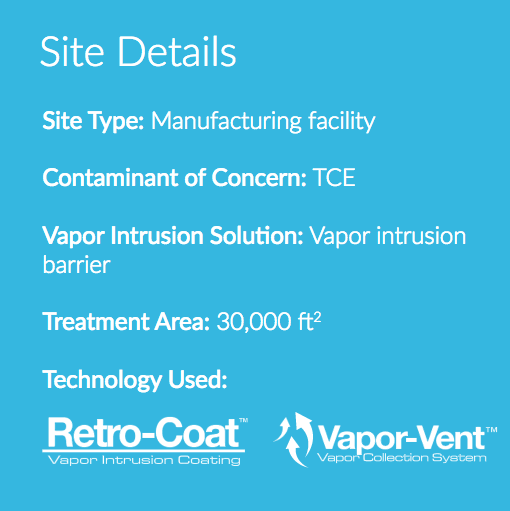 Trichloroethylene (TCE) contaminated areas were present in one section of the building. In 2009, in situ chemical treatment of the “hot spot” areas was conducted employing RegenOx® technology (REGENESIS®, San Clemente, CA). However, a vapor intrusion condition was later identified and mitigation was needed. Retro‐Coat was selected to be used in conjunction with an active sub‐slab depressurization (SSD) system. By simultaneously utilizing the two mitigation approaches, SME was able to reduce the number of SSD points in the design and the total area requiring the vapor intrusion barrier coating. MDEQ approved of the plan. A certified Retro‐Coat applicator installed 6 mils of red Retro-Coat Primer and 20 mils of grey Retro-Coat along with a broadcasted aggregate to provide a non-slip surface. The contrast in color between Primer and Retro-Coat allows the clear identification of wear over time, prompting repair if needed, and ensuring long‐term protection from vapor intrusion.
Trichloroethylene (TCE) contaminated areas were present in one section of the building. In 2009, in situ chemical treatment of the “hot spot” areas was conducted employing RegenOx® technology (REGENESIS®, San Clemente, CA). However, a vapor intrusion condition was later identified and mitigation was needed. Retro‐Coat was selected to be used in conjunction with an active sub‐slab depressurization (SSD) system. By simultaneously utilizing the two mitigation approaches, SME was able to reduce the number of SSD points in the design and the total area requiring the vapor intrusion barrier coating. MDEQ approved of the plan. A certified Retro‐Coat applicator installed 6 mils of red Retro-Coat Primer and 20 mils of grey Retro-Coat along with a broadcasted aggregate to provide a non-slip surface. The contrast in color between Primer and Retro-Coat allows the clear identification of wear over time, prompting repair if needed, and ensuring long‐term protection from vapor intrusion.
Technology Description
Retro‐Coat Vapor Intrusion Coating System is a complete product line that consists of chemically resistant materials to protect existing structures from the threat of contaminant vapor intrusion without the need for additional concrete protection. The Retro‐Coat system has been subjected to rigorous testing procedures to prove its ability to combat the most aggressive chemical vapors. The system is rated for industrial use providing a durable finished surface suitable for vehicular traffic. Retro‐Coat coating technology was specifically developed for vapor intrusion.
Vapor‐Vent is a low profile vent system that can be used in lieu of slotted PVC pipe. The speed of installation and the proximity of the vent to the barrier provide cost savings and performance benefits compared to other technologies.




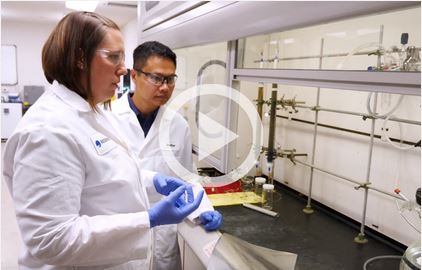
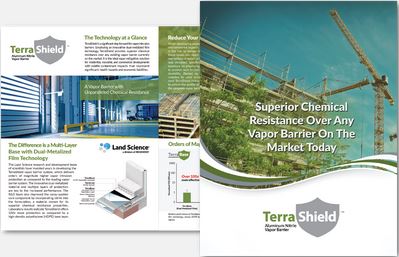

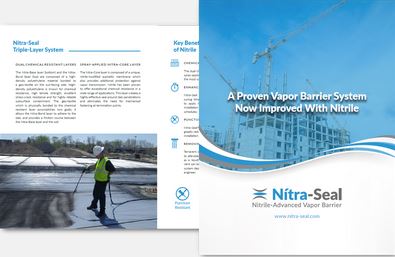



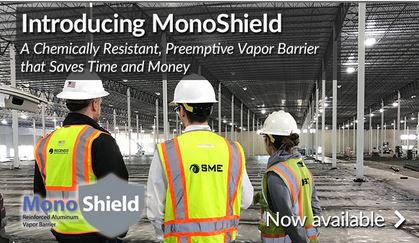
 Tom Szocinski, CEP
Tom Szocinski, CEP Kristen Thoreson, PhD
Kristen Thoreson, PhD



